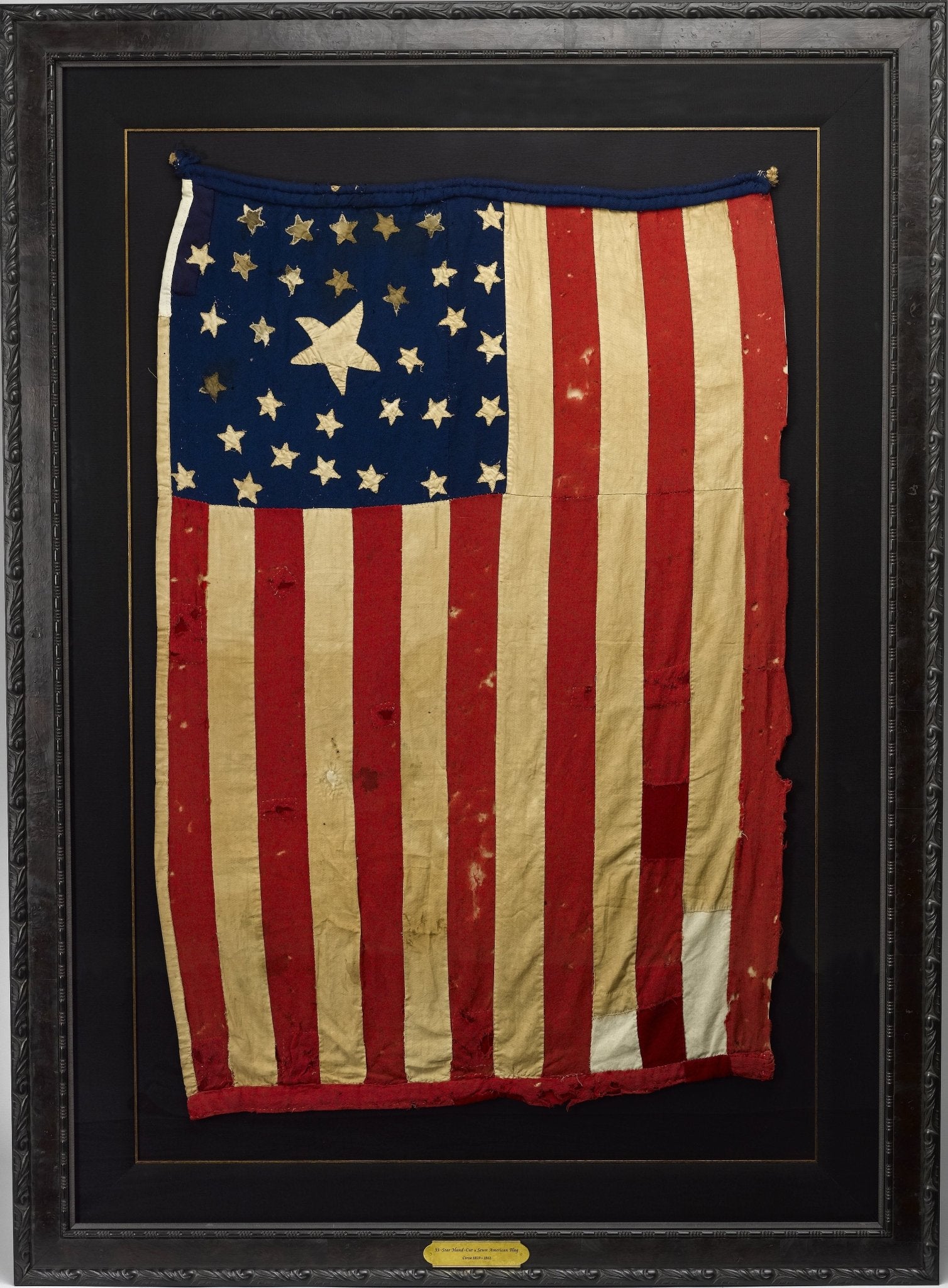The Rattlesnake: Benjamin Franklin’s Symbol of America
Both before and during the American Revolution, the nascent United States searched for appropriate symbols to represent a unified and unique country. Benjamin Franklin utilized the figure of the rattlesnake to first symbolize dissatisfaction with Great Britain, and later as a relevant symbol for the country overall.
Benjamin Franklin Signature Collage
$18,500.00
Rattlesnakes are only found in the Western Hemisphere. Primarily, they live south of Canada and down into South America. While they are most prevalent in southwestern United States, rattlesnakes lived in all thirteen of the colonies and were well-recognized.
Ben Franklin wrote an article in 1751 sarcastically suggesting that Americans ship rattlesnakes to England in retaliation for its importation of convicted criminals to the American colonies. Beginning around 1650, British prisoners were continuously brought to America. In response, states such as Virginia passed laws as early as 1670 prohibiting these imports. Great Britain respected the colonial laws until 1717, when Parliament passed an act specifically supporting the transportation of prisoners to the Americas.
On April 11th, The Pennsylvania Gazette published an article reporting an alarming number of crimes committed mostly by convict servants in Virginia, Pennsylvania, and Maryland. The article accused Great Britain of forsaking her daughter country by dismissing the state-created law and instead claiming, “These laws were against the Public Utility, for they tended to prevent the Improvement and Well-Peopling of the Colonies.” Always ready with a witty answer, Franklin wrote to The Pennsylvania Gazette in agreement with the aforementioned article, suggesting they show the “highest returns of gratitude and duty” to their mother country. In return for Britain’s concern and dedication to the ‘public utility,’ Franklin suggested a plan to collect thousands of rattlesnakes and disperse them throughout the parks in London to include the gardens of the Prime Minister, the Lords of Trade, and members of Parliament. Franklin, in his very tongue-in-cheek manner, suggested the snakes may change their behavior in the new climate, benefit the English public utility, and teach the English politicians how to “creep.” The Pennsylvania newspaper published Franklin’s article on May 9, 1751, and it grew so popular that the Virginia Gazette republished it later that month on May 30th (National Archives, Felons and Rattlesnakes, 2002). 
Three years later, in 1754, the American colonies were in the midst of the French and Indian War. The Albany Congress, made up of state representatives, was tasked to discuss the growing French threat and a potential treaty with the Iroquois Confederacy. Franklin feared the colonies were too concerned with their own needs and had no sense of unity even when faced with war. Just before the congress met, Franklin published news of a small defeat by the French as described by then-Major George Washington alongside his famous cartoon, “Join, or Die.” In this wood-cut engraving, Franklin depicted a rattlesnake cut into eight pieces, each with initials signifying different areas of the colonies. If unified, the rattlesnake can be an effective and mighty force, but when severed the snake is easily destroyed. Franklin once again used the uniquely American snake to determine a highly popular identity for the colonists. The cartoon gained fervent approval and was republished in several newspapers across the east coast.
Rattlesnakes remained a favorite symbol for Franklin, even after decades of political strife and changing enemies. Once fighting began during the Revolutionary War, the newly formed Marines were seen with drums painted yellow with a coiled rattlesnake above the words, “Don’t Tread On Me.” Franklin allegedly worked with Christopher Gadsden, a South Carolina representative and Colonel of the Continental Army, to create the Gadsden Flag of the same design. Gadsden presented the flag to the Commander-in-Chief of the Navy for use and it became one of the “battle flags” as described by Franklin in a letter to Naples. While it remained increasingly popular throughout the war and well after, the flag was never officially approved by Congress. Marines, in particular, used this design throughout the Revolutionary War as a unifying symbol of American identity.
Whether or not Franklin helped design the Gadsden flag, he at least encouraged its use. An anonymous article, signed “An American Guesser,” published in the Pennsylvania Journal on December 27, 1775 has since been credited to Ben Franklin. In the article, Franklin posed as “someone who has nothing to do with public affairs,” and continued to describe seeing this rattlesnake painted on a Marine’s drum. Franklin described in detail why he believed the rattlesnake was the perfect symbol for the colonies:
I recollected that her eye excelled in brightness, that of any other animal, and that she has no eye-lids—She may therefore be esteemed an emblem of vigilance.—She never begins an attack, nor, when once engaged, ever surrenders: She is therefore an emblem of magnanimity and true courage.—As if anxious to prevent all pretentions of quarrelling with her, the weapons with which nature has furnished her, she conceals in the roof of her mouth, so that, to those who are unacquainted with her, she appears to be a most defenceless animal; and even when those weapons are shewn and extended for her defence, they appear weak and contemptible; but their wounds however small, are decisive and fatal:—Conscious of this, she never wounds till she has generously given notice, even to her enemy, and cautioned him against the danger of treading on her.—Was I wrong, Sir, in thinking this a strong picture of the temper and conduct of America? (U.S. Naval History Division, American Theater, p. 266-268)
Franklin’s detailed defense of the rattlesnake as an appropriate symbol of America remains compelling and well-delivered. From his initial satirical suggestion to send rattlesnakes to England, to his impressionable “Join, or Die” call to action, and finally with this passionate explanation of the well-embraced symbol, Benjamin Franklin supported the famed venomous snake motif for decades.









